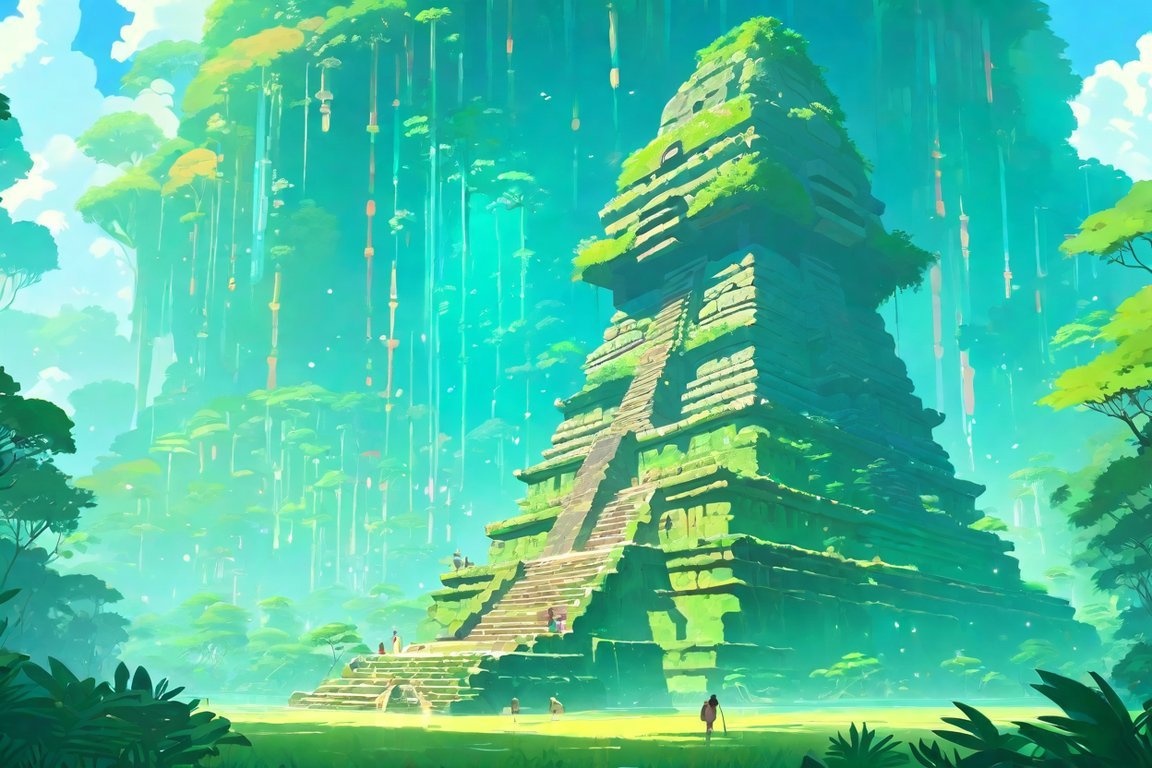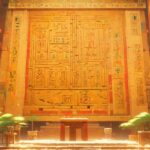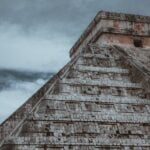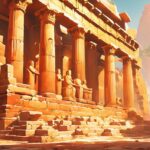Get ready to dive into the captivating world of the Maya civilization as we unveil a treasure trove of fascinating discoveries and intriguing facts. In this exploration of one of the most advanced ancient civilizations, we will unravel the mysteries behind the Maya’s awe-inspiring architecture, decipher their intricate hieroglyphics, and delve into the complexities of their calendar system. With years of research and exploration, our expert understanding of the Maya civilization allows us to present you with a captivating glimpse into the rich cultural heritage of this extraordinary civilization. Prepare to be astonished by the astonishing discoveries that await!
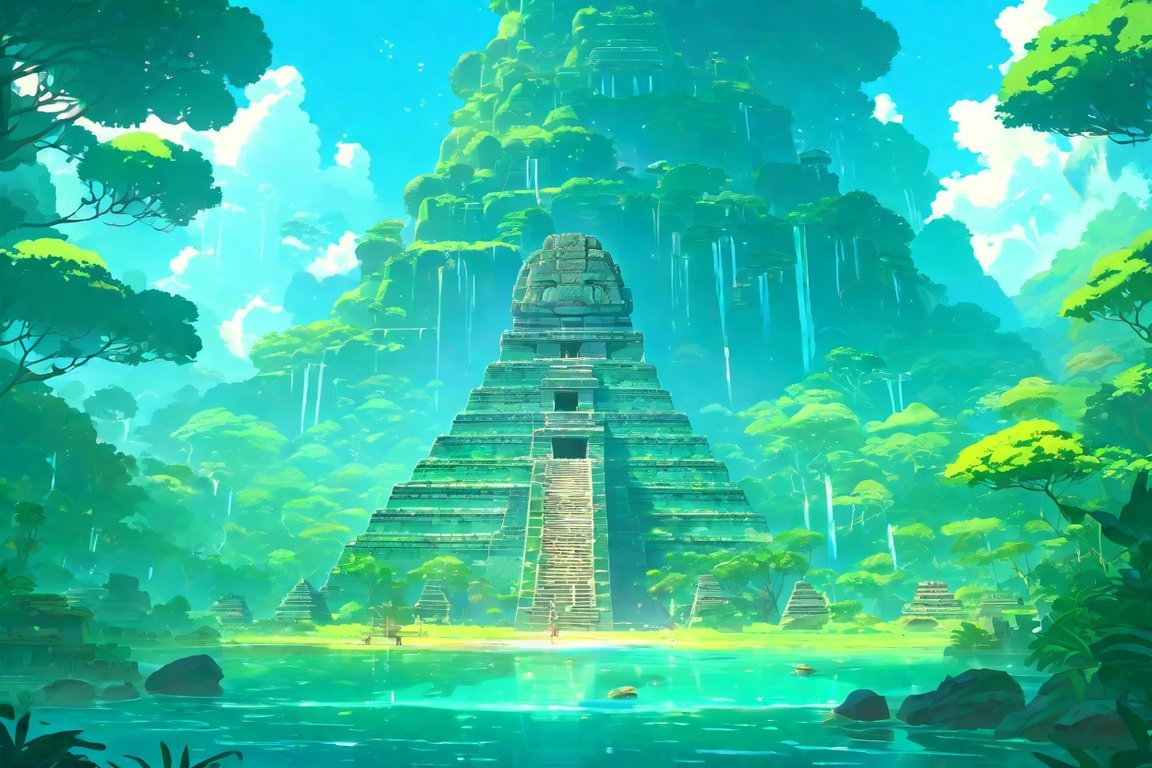
Key Takeaways:
- The Maya civilization developed around 2600 BC and consisted of numerous city-states.
- The Maya were known for their complex calendar system, astronomical skills, and medical practices.
- They invented concepts such as zero, rubber, chocolate, and writing.
- Maya pyramids and cities are still being discovered today.
- The Maya had a sophisticated hieroglyphic writing system.
- They believed in the existence of supernatural beings like aluxes and the underworld.
- The temple at Uxmal was believed to have been created by a mythical dwarf.
- The Maya believed that the earth existed between heaven and hell.
- The Maya civilization excelled in art, architecture, mathematics, calendars, and astronomy.
- The civilization declined around a thousand years ago but still existed during the arrival of Spanish conquistadors.
- Maya books were burned by Europeans.
- The Maya had an accurate and complex calendar system.
- Ritual enemas and blue-painted human sacrifices were part of Maya traditions.
- Cities like Chichen Itza and Tikal are popular tourist destinations.
- Maya temples and pyramids still stand today.
- The Maya heavily relied on agriculture.
- Maya cities and ruins can be found across Mexico, Guatemala, Belize, Honduras, and El Salvador.
Interesting Facts About the Maya Civilization
The ancient Maya civilization continues to captivate us with its rich history and enigmatic culture. From their advanced calendar system to their impressive architectural feats, the Maya left behind a legacy that still fascinates researchers and visitors alike. In this article, we will delve into some intriguing facts about the Maya civilization that highlight their remarkable achievements and shed light on their cultural practices.
1. The Maya Were Masters of Time
One of the most remarkable aspects of the Maya civilization was their intricate calendar system. The Maya had not just one, but several calendars, each serving different purposes. The most well-known is the Long Count calendar, which spans over 5,000 years and allowed the Maya to track time with astonishing accuracy. This calendar system reflected the Maya’s deep understanding of astronomy and celestial movements.
2. The Marvels of Mayan Architecture
Mayan cities are known for their awe-inspiring architecture, particularly their towering pyramids and grand temples. Cities like Chichen Itza and Tikal are popular tourist destinations, drawing visitors from around the world to marvel at these ancient structures. What makes Mayan architecture truly remarkable is the precision and sophisticated engineering techniques employed by the Maya. They built their structures with such precision that they aligned with celestial events, such as the equinoxes and solstices.
3. The Maya’s Impressive Written Language
The Maya developed a complex system of hieroglyphic writing, with over 800 individual characters. This intricate writing system allowed them to communicate their history, myths, and beliefs. While the Maya hieroglyphs remained a mystery for centuries, dedicated scholars and archaeologists have deciphered a significant portion of the script, unraveling the secrets of the Maya civilization.
4. Mayan Innovations and Inventions
The Maya were not only skilled astronomers and architects but also great inventors. They introduced several inventions to the world, including the concept of zero, which revolutionized mathematics. Additionally, they were the first civilization to cultivate cacao and create chocolate beverages, which were highly valued and often used in religious rituals. The Maya also invented rubber, using it for various purposes, from making balls for games to waterproofing their clothing.
5. The Maya’s Spiritual Beliefs and Practices
Spirituality played a central role in the lives of the Maya. They believed in the existence of aluxes, mischievous nature spirits, and the underworld, known as Xibalba. Mayan healers, called shamans, performed cleansing rituals and prayers to maintain spiritual harmony within their communities. Ritual enemas were also prevalent among the Maya for the purpose of purification.
6. The Mysterious Decline of the Maya
One of the greatest mysteries surrounding the Maya civilization is its sudden decline around a thousand years ago. The reasons behind this decline are still debated among scholars, with theories ranging from environmental degradation to political unrest. Regardless of the cause, it is clear that the Maya civilization left its mark on history, influencing future cultures in the region and inspiring generations to come.
The Maya civilization is a testament to human ingenuity and the remarkable achievements that can emerge from ancient societies. From their advanced calendar system to their breathtaking architectural wonders, the Maya continue to intrigue us with their cultural achievements. Exploring the fascinating world of the Maya opens a window into a civilization that resided between heaven and hell, leaving an indelible mark on our collective history.
Here are some fascinating facts that you must know about architecture. Explore these intriguing facts on architecture. Check it out here: facts on architecture
Coastal plains are rich in natural beauty and diverse ecosystems. Discover interesting facts about the coastal plains and their unique characteristics. Click here to find out more: facts about the coastal plains
Delve into the delicious world of macarons and unravel some surprising facts about these delightful treats. Satisfy your curiosity by clicking here: facts about macarons
Uncover the mysteries of the ancient Karnak Temple as you delve into these captivating facts about its history and grandeur. Embark on a fascinating journey by clicking here: facts about Karnak Temple
Indulge in a delectable journey through the fascinating facts about churros. Discover the origins and various ways these tasty treats are enjoyed around the world. Click here to satiate your curiosity: facts about churros
Prepare to dive into the wonderful world of boba and all its delightful wonders. Explore interesting facts about boba and its cultural significance. Click here to quench your thirst for knowledge: facts about boba
Get your hands dirty and dive into the slimy world of slime with these intriguing facts. Uncover the secrets and science behind this popular sensory toy by clicking here: facts about slime
Experience the awe-inspiring beauty of coastal plains through these captivating facts. Discover the unique characteristics and breathtaking landscapes of coastal plains. Click here to explore more: facts about coastal plains
Discover the fascinating country of Chad through these interesting facts. From its diverse culture to its stunning landscapes, there’s so much to learn. Click here to embark on a journey of discovery: interesting facts about Chad
Indulge your sweet tooth with these delectable dessert facts. From mouth-watering recipes to fascinating history, there’s something to satisfy everyone’s cravings. Click here to uncover dessert’s delicious secrets: dessert facts
The Maya developed a complex writing system known as hieroglyphics, which was deciphered with the help of the Rosetta Stone.
The ancient Maya civilization left a lasting legacy, particularly with their remarkable writing system known as hieroglyphics. This intricate system of symbols and glyphs allowed the Maya to record their history, mythology, rituals, and astronomical observations. Let’s delve into this fascinating aspect of Maya culture and explore how it was deciphered with the help of the Rosetta Stone.
The Maya’s hieroglyphic script, known as logo-syllabic, combined both pictographs and syllabic elements. It is the only pre-Hispanic writing system of Mesoamerica that has been largely deciphered. The Maya developed their writing system around 300 BCE, with the earliest known inscriptions found in San Bartolo, Guatemala. This advanced form of communication was in continuous use until the Spanish Conquistadors arrived in the 16th century.
The Maya writing system consisted of hieroglyphs, a combination of pictographs representing objects and ideograms representing abstract concepts. These hieroglyphs totaled over a thousand glyphs, including logograms and phonetic signs. Maya scribes skillfully inscribed these glyphs on various surfaces such as stone monuments, ceramics, and murals.
Deciphering the Maya hieroglyphic script was no easy feat. It required the efforts of dedicated scholars and the aid of the Rosetta Stone. Discovered in Egypt in 1799, the Rosetta Stone contains inscriptions in three languages: Ancient Egyptian hieroglyphs, Egyptian Demotic script, and Ancient Greek. The ability to read Ancient Greek allowed scholars to bridge the gap and begin deciphering the hieroglyphs.
Scholars made significant progress in the 19th century when they identified Maya hieroglyphs as a writing system. They initially deciphered the numerical system, which opened the door to understanding other aspects of the script. Over time, more and more Maya hieroglyphs were deciphered, unveiling valuable insights into Maya civilization.
Thanks to the diligent work of these scholars, we now have a deeper understanding of Maya culture. The deciphered hieroglyphs have revealed fascinating facts about their history, mythology, and daily life. They have shed light on the sacred rituals performed by Maya priests, the celestial observations used to create their advanced calendar system, and the narratives that were passed down through the generations.
Key Takeaways:
- The Maya developed a complex writing system known as hieroglyphics, incorporating pictographs and ideograms.
- Their hieroglyphic script is the only pre-Hispanic writing system of Mesoamerica that has been largely deciphered.
- The Maya used hieroglyphs to record various aspects of their culture, including history, mythology, rituals, and astronomical observations.
- The Rosetta Stone played a crucial role in deciphering the Maya hieroglyphs.
- Scholars made significant progress in deciphering the hieroglyphs in the 19th century, allowing us to gain valuable insights into Maya civilization.
Sources:
– The Maya, an introduction (article) | Maya | Khan Academy
– Maya Writing – World History Encyclopedia
Their calendar system was highly precise and even more accurate than the Gregorian calendar we use today.
The Maya civilization, known for their advanced understanding of astronomy, developed a calendar system that was highly precise and even more accurate than the Gregorian calendar we use today. In fact, their calendar system was a marvel of mathematical and astronomical knowledge that allowed them to track time with incredible accuracy.
Understanding the Maya Calendar System
The Maya calendar was a complex and sophisticated system that encompassed several different cycles. One of the most well-known cycles is the Long Count calendar, which measured time over a period of thousands of years. This calendar system was based on a hierarchical structure, with different cycles of varying lengths working together to create a comprehensive measurement of time.
The Accuracy of the Maya Calendar
Contrary to popular belief, the Maya calendar was not created to match the length of a year or lunar month. Instead, it was primarily used as a means of tracking the passage of days. However, this does not diminish the incredible accuracy of their calendar system.
While some sources debate the accuracy of the Maya calendar compared to the Gregorian calendar, it is widely acknowledged that the Maya calendar was highly precise for its time. The Maya used a 365-day year, which is slightly less precise than the 365.2425 days of the Gregorian calendar. However, they made up for this slight discrepancy by incorporating additional cycles and adjustments into their calendar system.
A Complex and Intricate System
The Maya calendar system included several cycles, such as the tzolk’in and the haab’. The tzolk’in, also known as the Sacred Round, was a 260-day cycle that combined a set of 20 day names with a set of 13 numbers. This cycle repeated continuously, creating a unique combination of day name and number for each day of the 260-day period.
The haab’, on the other hand, was a 365-day agricultural calendar divided into 18 months of 20 days each. This was supplemented by a 19th month of 5 days, known as the Wayeb’. By combining the tzolk’in and the haab’, the Maya were able to create a calendar system that accurately tracked time over long periods.
Key Takeaways:
- The Maya calendar system was highly precise and accurate for its time, even surpassing the accuracy of the Gregorian calendar.
- The Maya calendar was not designed to match the length of a year or lunar month but rather focused on tracking the passage of days.
- The Maya calendar consisted of various cycles, including the Long Count, the tzolk’in, and the haab’.
- The tzolk’in was a 260-day cycle that combined day names and numbers to create a unique combination for each day.
- The haab’ was a 365-day agricultural calendar divided into 18 months of 20 days each, supplemented by a 19th month called the Wayeb’.
Sources:
1. Is There a Perfect Calendar?
2. 10 Interesting Facts About The Calendar
The Maya constructed impressive architectural structures, including towering pyramids and intricate palaces, which showcased their advanced engineering and artistic skills.
The Maya civilization has left behind a rich architectural legacy that continues to intrigue and captivate us today. Their impressive structures, such as soaring pyramids and elaborate palaces, stand as a testament to their advanced engineering and artistic prowess.
Maya cities were carefully laid out, often featuring plaza groups with clusters of buildings surrounding a central plaza. In the heart of these cities, the elite Maya rulers resided in magnificent stone palaces, strategically located near the temples. On the other hand, the common Maya people lived in smaller houses located outside the city centers.
One of the most recognizable features of Maya architecture is the use of stone temples, often in the form of pyramids. These pyramids were constructed with steep stone steps ascending to the top, where important ceremonies and rituals took place. The Maya utilized limestone platforms for ceremonial purposes, adorned with intricately carved figures and altars, showcasing their attention to detail and artistic skills.
The remarkable aspect of Maya architecture is its evolution and innovation throughout several thousand years. Different periods within Maya history witnessed architectural advancements, with each era showcasing unique characteristics and styles. Notable examples of Maya architectural sites include El Tajin and Chichen Itza, both renowned for their grandeur and intricate designs.
It is significant to recognize that Maya architecture is one of the few aspects of Maya culture that is still accessible for study. This allows us to gain valuable insights into their beliefs, customs, and way of life. The structures they built served as not just physical spaces but also as representations of their culture and religious practices.
Key Takeaways:
– The Maya civilization constructed towering pyramids and intricate palaces, showcasing their advanced engineering and artistic skills.
– Maya cities were carefully planned, with plaza groups and clusters of buildings surrounding a central plaza.
– The elite Maya rulers resided in stone palaces near the temples, while the common Maya lived in smaller houses outside the city centers.
– Maya temples, often in the form of pyramids, featured steep stone steps leading to ceremonial platforms adorned with carved figures and altars.
– Maya architecture evolved and showcased different styles and characteristics throughout several thousand years.
– Notable examples of Maya architectural sites include El Tajin and Chichen Itza.
– Maya architecture provides valuable insights into their culture, beliefs, and way of life.
Sources:
– ThoughtCo: “Ancient Mayan Architecture – Temples and Palaces”
– Wikipedia: “Maya architecture”
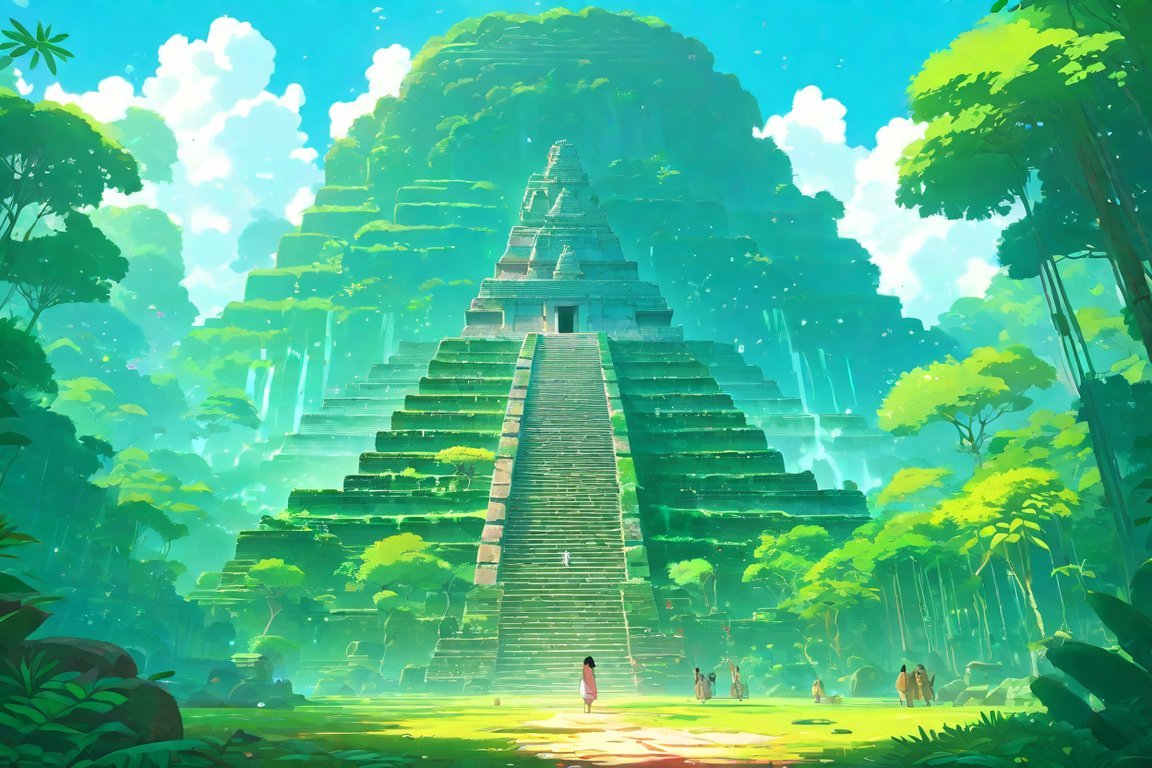
FAQ
Q1: What is the Maya civilization known for?
A1: The Maya civilization is known for its complex calendar, astronomical skills, and medicine. They also invented many things, including the concept of zero, rubber, chocolate, and writing.
Q2: What are some fascinating facts about Maya architecture?
A2: Maya architecture is characterized by the use of stone temples, palaces, and pyramids, often in the form of pyramids with steep stone steps leading to the top. They used limestone platforms for ceremonial purposes and decorated them with carved figures and altars. Notable Maya architectural sites include El Tajin and Chichen Itza.
Q3: How did the Maya communicate through writing?
A3: The Maya developed a sophisticated writing system using hieroglyphs, which were a combination of pictographs representing objects and ideograms representing abstract concepts. They used these glyphs to record various aspects of Maya culture, including history, mythology, rituals, and astronomical observations.
Q4: Did the Maya have an accurate calendar system?
A4: The accuracy of the Maya calendar is a topic of debate. While some claim that it is more accurate and closer to the real solar year than the Gregorian calendar, others argue that it is less accurate than even the Julian calendar. The Maya used a 365-day year, which is less precise than the 365.2425 days of the Gregorian calendar.
Q5: Where can I find Maya ruins and cities today?
A5: Maya cities and ruins can be found in Mexico, Guatemala, Belize, Honduras, and El Salvador. Popular tourist destinations include Chichen Itza and Tikal, where visitors can explore the impressive Maya temples and pyramids that are still standing today.
- Crypto Quotes’ Red Flags: Avoid Costly Mistakes - June 30, 2025
- Unlock Inspirational Crypto Quotes: Future Predictions - June 30, 2025
- Famous Bitcoin Quotes: A Deep Dive into Crypto’s History - June 30, 2025
